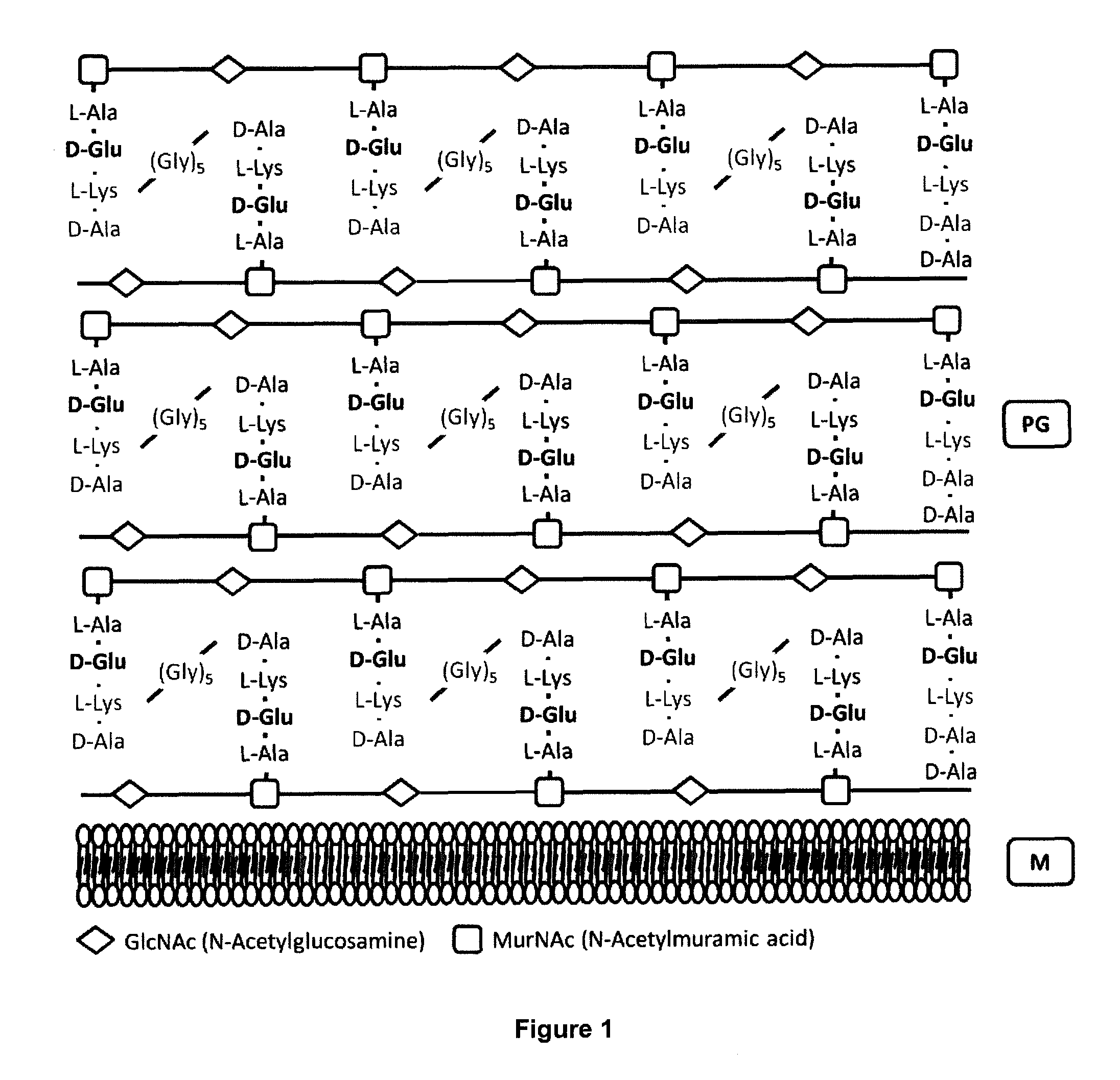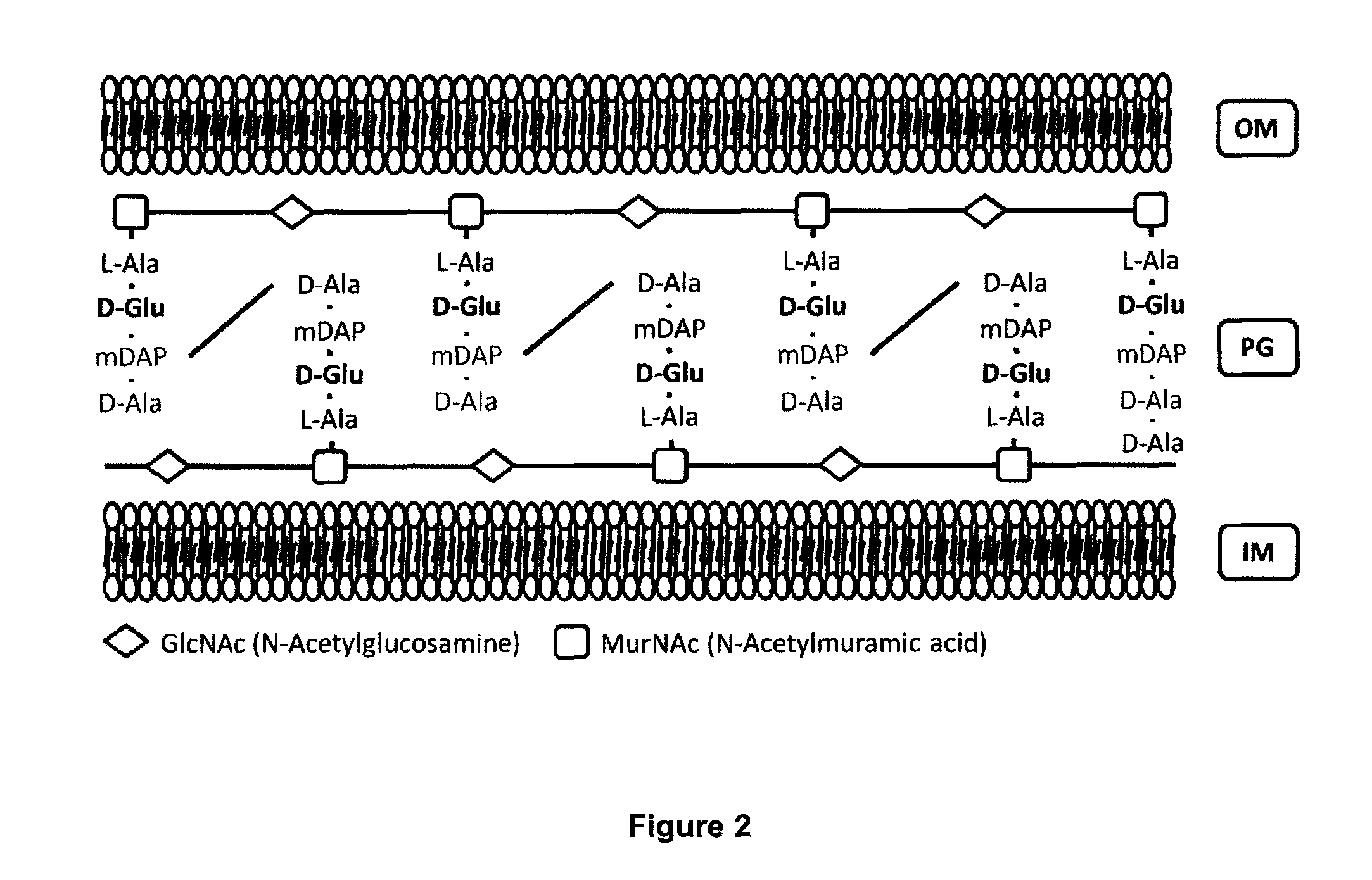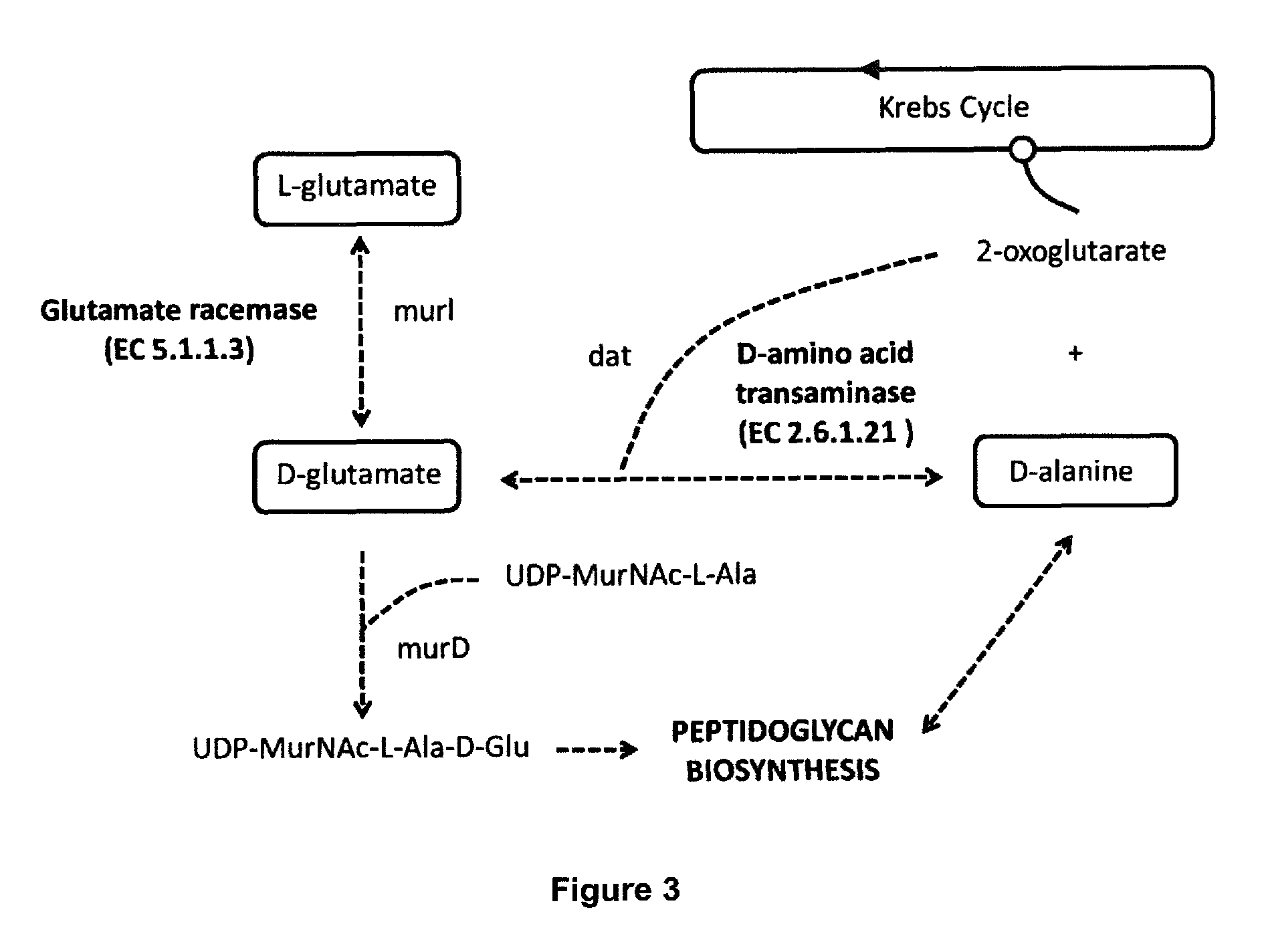Live attenuated vaccines
- Summary
- Abstract
- Description
- Claims
- Application Information
AI Technical Summary
Benefits of technology
Problems solved by technology
Method used
Image
Examples
example 1
Analysis and Identification of the Nucleotides and of the Amino Acid Sequences of the Genes Encoding the A. baumannii ATCC 17978 Glutamate Racemase Enzyme
[0292]The authors of the present invention conducted a search for genes encoding glutamate racemase enzyme in the A. baumannii ATCC 17978 genome annotation using the Protein Knowledgebase (UniProtKB) database search tool. Two amino acid sequences corresponding to proteins Murl (locus A1S_0380 and locus A1S_3398) were identified. These sequences were compared to one another, and to other glutamate racemase protein sequences present in other bacterial species the genomes of which were sequenced, by means of the Clustal Omega alignment tool.
[0293]As a result of the previous analysis the genes encoding glutamate racemase protein in the A. baumannii ATCC 17978 genome were identified. Two candidate genes for possible glutamate racemases were thus found: the gene annotated as A1S_0380 encoding a 288 amino acid protein called murl and gene...
example 2
Construction and Characterization of Different A. baumannii Mutant Strains without Glutamate Racemase Genes
[0295]Homologous double recombination was carried out using suicide vector pMo130 to construct the different mutant strains. First, the A1S_0380 murl and A1S_3398 murl genes were deleted independently, both mutant strains called Δ0380 and Δ3398, respectively, being obtained. Fragments of about 1.000 bps corresponding to the upstream and downstream regions of each of the genes were amplified by means of PCR to construct these mutants. Both fragments were cloned into vector pMo130 using the resulting recombinant plasmid to remove the A1S_0380 murl and A1S_3398 murl genes by means of homologous double recombination.
[0296]The A1S_0380 murl gene upstream fragment was obtained by means of PCR amplification with oligonucleotides UP0380(NotI)F and UP0380(BamHI)R, the resulting PCR product being digested by NotI and BamHI restriction enzymes. The A1S_0380 murl gene downstream fragment w...
example 3
Effect of D-glutamate on Double Mutant (Δ0380 / Δ3398) Growth and Viability in Liquid Culture Medium
[0305]To determine the growth and viability curve, A. baumannii wild type strain ATCC 17978 and the double mutant strain were cultured for 18 h at 37° C. in LB supplemented with 10 mM D-glutamate. The bacterial cultures were centrifuged and the pellets washed twice with LB and adjusted to OD600 nm=0.1. 100 μL were subsequently inoculated in 100 mL liquid LB with and without 10 mM D-glutamate, and these cultures were incubated at 37° C. under stirring, taking samples every 60 minutes for 7 hours, and finally, after 24 hours, to determine optical density of the medium. In parallel, samples were taken every 2 hours up to 6 hours, and finally, another sample was taken after 24 hours to determine the CFU (Colony Forming Units) in LB agar with 10 mM D-glutamate. All cultures were made in triplicate.
[0306]Growth curves for wild type strain ATCC 17978 as well as for mutant strain Δ0380 / Δ3398 we...
PUM
| Property | Measurement | Unit |
|---|---|---|
| temperatures | aaaaa | aaaaa |
| pH | aaaaa | aaaaa |
| temperature | aaaaa | aaaaa |
Abstract
Description
Claims
Application Information
 Login to View More
Login to View More - R&D
- Intellectual Property
- Life Sciences
- Materials
- Tech Scout
- Unparalleled Data Quality
- Higher Quality Content
- 60% Fewer Hallucinations
Browse by: Latest US Patents, China's latest patents, Technical Efficacy Thesaurus, Application Domain, Technology Topic, Popular Technical Reports.
© 2025 PatSnap. All rights reserved.Legal|Privacy policy|Modern Slavery Act Transparency Statement|Sitemap|About US| Contact US: help@patsnap.com



